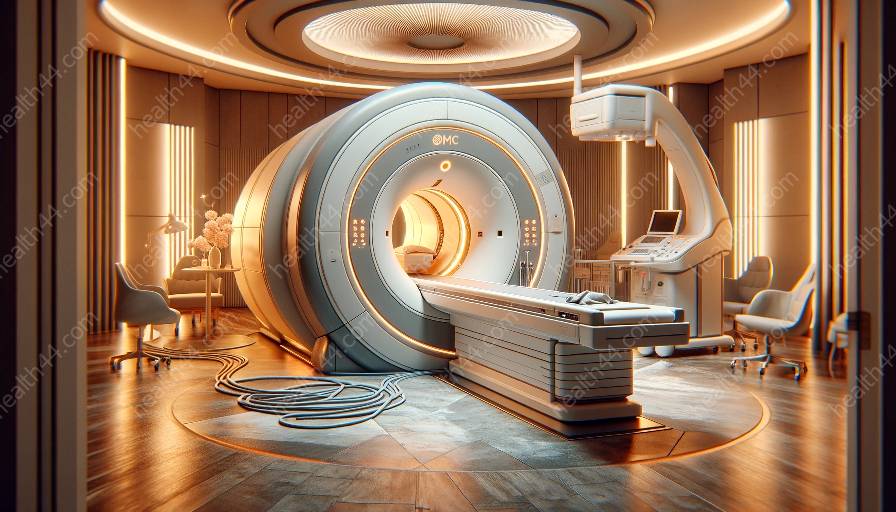Magnetic Resonance Imaging (MRI) is an incredible medical imaging technology that revolutionized diagnostic medicine. In MRI machines, the process of image formation and reconstruction is a crucial component that allows for the visualization of internal body structures and abnormalities. This topic cluster aims to provide a comprehensive understanding of how MRI machines create and reconstruct images, the underlying physics principles, and the impact of this technology on medical devices and equipment.
Technology Behind MRI Machines
MRI machines utilize the principles of nuclear magnetic resonance to generate detailed images of the human body. When a patient undergoes an MRI scan, they are exposed to a strong magnetic field and radiofrequency pulses, which cause the hydrogen atoms in their body to align in a specific manner. This alignment produces a detectable signal that is processed by the MRI machine to create an image.
The image formation and reconstruction process in MRI machines involve complex mathematics and signal processing algorithms. The raw data collected during the scan is transformed into a meaningful image through a series of steps that include Fourier transformation, filtering, and spatial encoding.
Image Formation in MRI
The initial signal obtained from the patient's body during the MRI scan contains information about the spatial distribution of hydrogen atoms, which is then processed to form an image. The process of image formation in MRI involves spatial encoding through gradients, signal acquisition, and mathematical transformation to create a visual representation of the internal body structures.
By manipulating the magnetic field gradients across different directions, MRI machines encode spatial information into the acquired signals. These signals are then digitized and processed to construct a two- or three-dimensional image, revealing the anatomical and pathological details of the imaged area.
Reconstruction Techniques in MRI Machines
Reconstructing the acquired signals into high-quality images is a critical aspect of MRI technology. Various reconstruction techniques such as Fourier transformation, k-space filling, and image filtering are employed to transform the raw data into a clear and detailed representation of the patient's anatomy.
Through Fourier transformation, the raw signal data is converted from the time domain to the spatial frequency domain, allowing for the separation of signals from different tissues and the suppression of artifacts. K-space filling involves the orderly filling of the spatial frequency domain, enabling the assembly of a complete image from the acquired data.
Impact on Medical Devices and Equipment
The advancements in image formation and reconstruction techniques in MRI machines have significantly influenced the design and functionality of medical devices and equipment. The ability to obtain highly detailed and accurate images of soft tissues and organs has led to the development of specialized MRI-compatible devices and accessories.
Medical equipment such as surgical tools, implants, and monitoring devices are now designed to be compatible with MRI machines, allowing patients with such devices to undergo imaging without the risk of interference or harm. Additionally, the improved image quality and diagnostic capabilities of MRI technology have contributed to accurate disease detection and treatment planning.
Optimizing MRI Image Quality
Efforts to enhance the image quality and diagnostic accuracy of MRI scans continue to drive technological innovations. Advanced image reconstruction algorithms, parallel imaging techniques, and motion correction methods are being developed to reduce image artifacts, improve spatial resolution, and mitigate the effects of patient motion during scanning.
The integration of artificial intelligence (AI) and machine learning algorithms into MRI image reconstruction processes holds promise for further improving the speed and accuracy of image generation, ultimately benefiting patients and healthcare providers.
Conclusion
The image formation and reconstruction process in MRI machines represent the culmination of sophisticated physics principles, advanced signal processing, and medical imaging technology. The ability of MRI machines to non-invasively visualize internal body structures and pathology has transformed the field of diagnostic imaging and has a profound impact on medical devices and equipment. As technology continues to evolve, the future of MRI imaging holds great potential for further enhancing patient care and advancing medical diagnostics.


